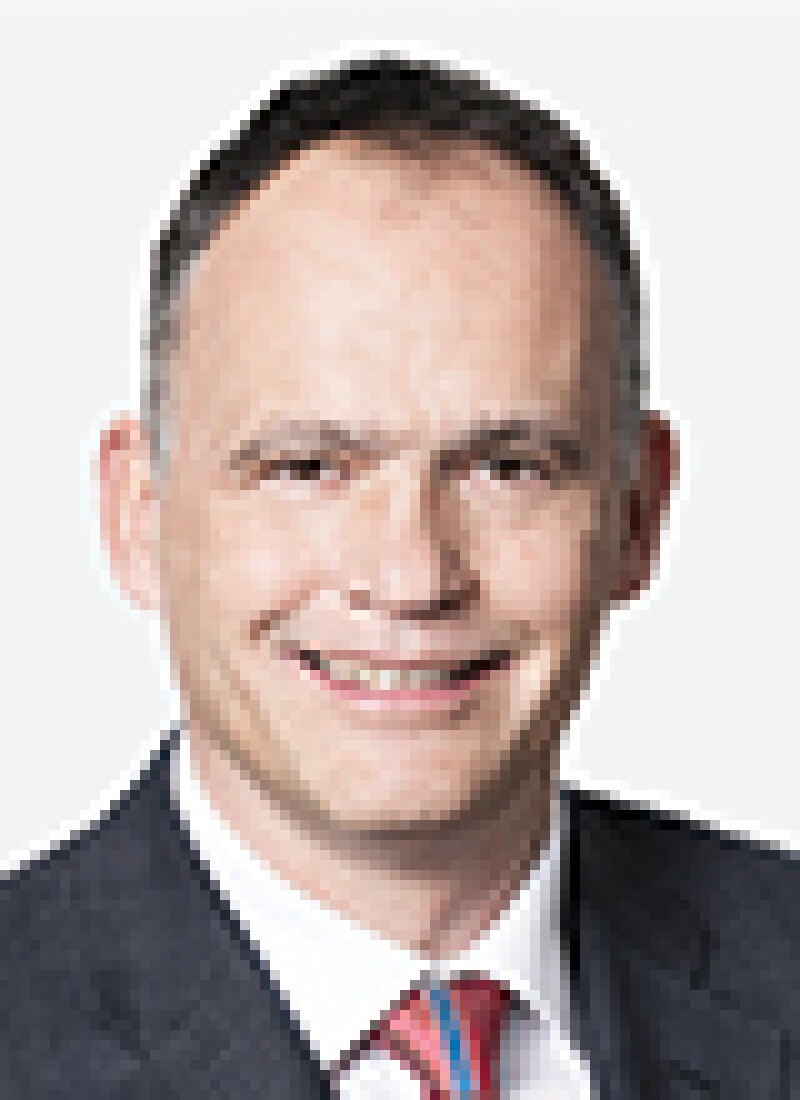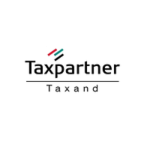Introduction: The international tax landscape
In many multinational enterprises (MNEs), a significant part of the value creation is attributable to the development, management and exploitation of intangibles. Over the last decades, in a global economy, technological developments have enabled the economy to prosper. Simultaneously, it has changed the way intangible values are created and captured across MNEs' value chains. Mobility of value-generating factors and the difficulty in defining the exact location of value creation have added further complexity on the determination of how and where intangible-related income should be taxed. Towards this cause, the efforts of the OECD/G20 BEPS Project resulted in domestic and international rules, as well as in instruments, to address tax avoidance with the objective of ensuring that profits are taxed where economic activities generating the profits are performed and where value is created.
At the same time, many jurisdictions are aiming to attract innovation projects, start-ups and development activities while offering competitive nominal corporate income tax rates and tax incentives for research and development (R&D) and innovation. Many jurisdictions have introduced: i) BEPS Action 5 on intellectual property (IP) box regimes, allowing income generated from intangibles to be subject to a lower taxation; and/or ii) R&D incentives schemes allowing in-country R&D costs to be more than 100% deductible for tax purposes.
Tax incentives, however, are not the only drive. There are many business aspects which will be considered by the MNE, when deciding on a location to develop, manage and/or exploit intangibles. Attractive business conditions at the location of choice may be one of them. Switzerland has traditionally been one of the preferred locations for MNEs to these functions. Switzerland offers political and financial stability, legal certainty, excellent infrastructure and a highly educated work force, as well as an excellent education system including highly ranked universities.
With the adoption of the Federal Act on Tax Reform and AHV Financing (TRAF) in 2019 and its implementation at cantonal level from January 1 2020, Switzerland complies with international tax standards by abolishing special tax regimes. In addition, it introduced other tax measures to remain an attractive place for businesses. Many cantons have reduced their ordinary nominal tax rate and are implementing R&D tax incentives, further reducing the effective tax rate, to reach rates ranging from 9% to 14%.
This article examines the potential for capitalising on the freshly introduced tax incentives when relocating activities in Switzerland while also considering the effects of the relocation from a transfer pricing perspective.
Swiss tax reform
In connection with the development, management and exploitation of intangibles, the following measures under the TRAF are of particular relevance.
Reduction of ordinary income tax rates
Many cantons announced a reduction of their ordinary income tax rates at cantonal/communal level. Due to this reduction, most of the cantons offer an overall effective corporate income tax rate (including federal, cantonal and communal tax) between 12%-15%, (for example, Zug and Schwyz (12%), Basel City and Vaud (13%) and Geneva (14%).
Step-up in basis
By transferring assets, functions or effective place of management from abroad to Switzerland, a taxable entity may disclose hidden reserves and goodwill in a tax neutral manner (step-up in basis). The disclosed hidden reserves can be depreciated annually at the rate applied for tax purposes to the depreciation of the assets concerned. For instance, intangible assets can be depreciated within a period of five to 20 years for tax purposes, whereas original goodwill can be, in principle, depreciated within 10 years.
R&D super deduction (input promotion of innovation)
The TRAF allows cantons to introduce additional deduction for (R&D) costs. 15 cantons will implement a R&D super deduction of 50% and four cantons will have a R&D super deduction between 20% and 40%.
In accordance with the Federal Act on the Promotion of Research and Innovation (RIPA), the Tax Law Act defines R&D as follows:
a) Scientific research (research), meaning the method-based search for new knowledge, including:
1) Basic research with the main goal of gaining knowledge; and
2) Applied research with the primary goal of contributing practice-oriented solutions;
b) Science-based innovation (innovation) including development of new products, methods, processes and services in industry and society through research, particularly applied research and the exploitation of its results.
This definition of R&D according to the tax law refers to the OECD's Frascati Manual 2015, which provides guidelines for collecting and reporting data on research and experimental development. By adopting this R&D definition a wide scope for the application of the tax incentive is ensured.
The manual provides concrete examples, among others:
The development of new operating systems or languages;
The design and implementation of new search engines based on original technologies; and
The creation of new or more efficient algorithms based on new techniques; and
The creation of new and original encryption or security techniques.
Importantly, the activities in the field of development of artificial intelligence (AI) fall in R&D and can benefit from the R&D super deduction.
There are various aspects to consider when calculating the R&D super deduction:
The measure applies only to costs incurred for domestic R&D activities;
For the staff costs, a flat-rate allowance of 35% is added to account for other R&D costs; and
Furthermore, 80% of the incurred R&D costs contracted from related parties and third parties in Switzerland can be considered for the calculation.
By claiming the R&D super deduction, the taxable profit will be reduced in the annual tax return for the cantonal/communal tax. The deduction is not applicable for federal tax.
The maximum tax relief on profits arising from the patent box and a potential R&D super-deduction cannot exceed 70% of the net profit if a lower relief cap is not applicable according to the cantonal law.
The R&D super deduction is tax effective independently on the profit margin (in contrast to the patent box).
The taxpayer which would like to claim the R&D super deduction must prepare documentation describing the R&D activities and set up the accounting system in such a way that the personnel costs for R&D can be determined directly.
Patent box (output promotion of innovation)
The TRAF introduced in all the cantons a mandatory patent box in line with the OECD minimum standard (BEPS Action 5). By applying for the patent box, a maximum of 90% of the portion of the income resulting from patents and similar intangibles related to Swiss-incurred R&D expenditures, is exempted from the taxable income at a cantonal level. The patent box will be implemented by 16 cantons with the maximum level of exemption allowed by the TRAF, i.e. 90%, whereas the other 10 cantons will pursue a lower exemption percentage, i.e. between 10% and 50%.
For the application of the patent box, a patent or a comparable right is required.
Patents include:
1) Patents as defined by the European Patent Convention;
2) Patents as defined by the Swiss Patents Act; and
3) Foreign patents equivalent with patents mentioned before.
Comparable rights include:
1) Supplementary protection certificates (as per the Swiss Patents Act);
2) Topographies (as per Swiss topography law);
3) Plant varieties (as per Swiss plant variety protection law);
4) Document protection as per the Swiss Therapeutic Products Act (e.g. drugs); and
5) Foreign rights equivalent to the rights listed above.
Switzerland does not include in the patent box inventions by small and medium-sized enterprises (SMEs) that are not protected by a patent nor does it include software (as software cannot be protected by way of a patent). However, there are exceptions. Computer-implemented inventions can be protected by a patent in Switzerland and are included in the patent box. Thus, the patent box is possible in the area of the information technology if the software developed is linked with a technical innovation, like a computer, tablet or a smartphone. Also, foreign-patented software is eligible.
In line with the modified nexus approach, only the income attributable to domestic R&D costs can benefit from the tax discount. The nexus ratio is calculated as the ratio of qualifying R&D costs (cost related to R&D activities performed in Switzerland by the MNE and by unrelated parties) over the total R&D costs (also including any patent acquisition costs).
The profits attributable to the patent box can include royalties, capital gains from the sale of the patent as well as embedded IP income from the sale of products. Where the IP is contained in a product, the box profit is calculated by using the residual method, i.e. by deducting income for routine functions (equal 6% of the product costs) and brand fee (ad hoc) from the net profit of the product. For this reason, the patent box is worthwhile for businesses achieving such residual income.
As for the R&D super deduction, the relief cap of 70% or lower (according to the cantonal tax law) is applicable.
Upon entry into the patent box R&D costs for the development of the patent which were fully tax deductible need to be recaptured. Cantons apply different recapture rules (adding these R&D costs to ordinary taxation, deferring entry tax, offsetting with patent box profit or an entry tax at reduced rate).
For the application of the patent box, the calculation of the nexus ratio and the profit of the patent box need to be documented.
Effective income tax rates
The impact of the patent box and R&D super deduction will contribute to a further reduction of the effective income tax rate to reach rates ranging from 9% to 14% (depending on the canton). Furthermore, the tax-neutral step-up allows taxpayers to implement and adjust to the new environment and reduce the effective income tax rates further over the next few years.
Envisaging Switzerland as a location
The R&D super deduction can result in tax benefits for businesses which locate their R&D activities in Switzerland. It is possible to mitigate the impact of the relief restrictions connected to the level of net profit by performing the R&D activities and other profit generating activities in one entity.
The R&D activities might lead to a patentable IP and the patent box might be considered. Under the Swiss residual method, the income benefiting from the tax incentive includes royalty income but also the embedded IP income from the sale of products. It may, therefore, be attractive to locate additional exploitation activities in Switzerland. This may justify attributing the embedded IP income with that Swiss entity as well.
When existing intangibles are transferred from abroad to Switzerland, a tax neutral step-up in basis and a depreciation on hidden reserves/goodwill may be an interesting option. Depreciation on the step-up in basis can be deducted for federal tax cantonal/communal tax. Relief restriction leading to a minimal taxable income for the cantonal/communal tax does not apply to the step-up. Therefore, the depreciation on the step-up can lead to a taxable profit of zero or even to tax losses that can be carried forward for the next seven years.
In brief, the potential tax savings need to be carefully assessed and various scenarios need to be contemplated in order to ensure optimal exploitation of the tax saving tools made now available to taxpayers. Step-up, R&D super deduction and patent box can be combined, in a way that the best result for the enterprise can be achieved. Upon entry into the patent box the correction mechanism in relation to the past R&D costs deducted in Switzerland needs to be taken into account. Due to the different systems in the cantons the entry into the patent box needs to be carefully elaborated.
Transfer pricing considerations
Research and development, management and exploitation of intangibles within a MNE will lead, most likely, to cross-border intra-group transactions. Intra-group cross-border transactions may, for example, involve the transfer of goods or services using trademarks, patents or know-how, R&D services or patent licenses. In such cases, the transfer prices should be determined respecting the arm's-length principle. If the arm's-length principle is not respected, the risk is that the resulting allocation of taxable income and costs over the various jurisdictions is not recognised and anticipated tax benefits cannot be obtained.
The 2017 update of the OECD Transfer Pricing Guidelines, following Action 8-10 of the BEPS Project introduced a new way of dealing with transactions involving intangibles: the DEMPE analysis (development, enhancement, maintenance, protection and exploitation). The DEMPE analysis, stemming from the effort of creating a clear link between economic substance and profit recognised in a jurisdiction, requires the taxpayer to respond to the questions regarding who within the MNE undertakes, and more importantly, controls the development, enhancement, maintenance, protection and exploitation of the IP under review, and who bears the relative risks and owns the associated assets. The MNE should consider which meaning and relative importance can be attributed to the DEMPE functions in its particular industry and company structure. Once the location of the functions and their relative significance have been established, the pricing of the transaction needs to be determined.
Therefore, when locating activities in Switzerland, it should be considered that functions aimed at simply implementing IP strategies will not entitle group entities performing these functions to a significant share of the profits. Rather, the group entities involved in the development, setting and control of the IP strategy will earn residual profit associated with the exploitation of intangible once routine functions have been rewarded.
Also, the relocation of an activity may be a transaction. If in that transaction something of value is transferred cross-border from one group entity to another, pricing needs to be established in line with arm's-length principle, more specifically a transfer of something of value will require an assessment under transfer pricing business restructuring provisions: the 'options realistically available' to the transferor need to be considered.
Taxpayers are required to document their eligibility to the tax incentives and, when cross-border inter-company transactions are relevant, to produce an extensive local and global transfer pricing documentation that lays its foundations in the global value chain analysis. These two sets of documentation – tax incentives documents from one side and master file and local transfer pricing files on the other, have one common denominator: the substance requirements. Thus, it is paramount that the analysis of the substance provided by the taxpayers in each set of documents is not contradicting one another, rather consistency and alignment should be sought to ensure effectiveness of the tax incentives.
Conclusion
In a post-reform Switzerland, MNEs have an interesting set of tools available that, when used with care, could lead to a reduction of their local effective tax rate. At the same time, the cross-border impact of applying for local tax incentives necessitates a converged tax policy.
Where the pursuit of local tax incentives are framed beyond the Swiss borders, the local tax measures and their prerequisites have to co-exist and be harmonised with a wider interpretation of the nexus that requires consistency with the overall group IP structure. Relevant R&D expenses cannot be isolated from relevant functions, assets and risks i.e. from the outcome of a DEMPE analysis.
Hendrik Blankenstein |
|
|---|---|

|
Partner, Zurich Tax Partner AG – Taxand Switzerland Tel: +41 44 215 77 54 hendrik.blankenstein@taxpartner.ch Hendrik Blankenstein is a partner of Tax Partner AG and leads its transfer pricing team. From 1989 to 1995, Hendrik was an international tax consultant at Big Four firms in both the US and the Netherlands, from 1996-2004 he worked as an in-house international tax and transfer pricing counsel at Nestlé's HQ in Switzerland, and from 2005 to 2015 as a Swiss based partner in globally operating transfer pricing boutique consultancy firms. Hendrik has been providing transfer pricing advice to Swiss and foreign multinational clients in a variety of industries, covering design of transfer pricing systems, preparation of master file/local file documentation, negotiation and conclusion of unilateral/bilateral APAs, successful management of complex transfer pricing audits and setting up transfer pricing risk management frameworks. Tax Partner is one of the leading tax firms in Switzerland. With a team of approximately 40 professionals, the firm advises a range of multinational and national corporate clients as well as individuals. In 2005, Tax Partner co-founded Taxand – the first global network, with more than 400 tax partners and over 2,000 tax advisers from independent member firms in 50 countries. |
Caterina Colling Russo |
|
|---|---|

|
Senior advisor, Lausanne Tax Partner AG – Taxand Switzerland Tel: +41 44 215 77 56 caterina.collingrusso@taxpartner.ch Caterina Colling Russo has more than 14 years' full-time experience in transfer pricing consulting. Before joining Tax Partner AG in 2016, Caterina has previously held specialist transfer pricing positions within global international tax and transfer pricing firms. She has worked in Amsterdam, London and Rome. She is a transfer pricing advisor for listed and non-listed Swiss and international multinationals. Caterina is a speaker at tax seminars, and has published various articles and books on transfer pricing. |
Oliver Jäggi |
|
|---|---|

|
Senior advisor, Zurich Tax Partner AG – Taxand Switzerland Tel: +41 44 215 77 41 Oliver Jäggi has more than 18 years of experience in local and international tax. He started his career with a Big Four firm and joined Tax Partner as an advisor in 2008. He advises national and international companies, entrepreneurs and individuals. His experience includes M&A, restructuring and litigation. Oliver is lecturer at tax seminars and publishes articles on international and national taxation. |














